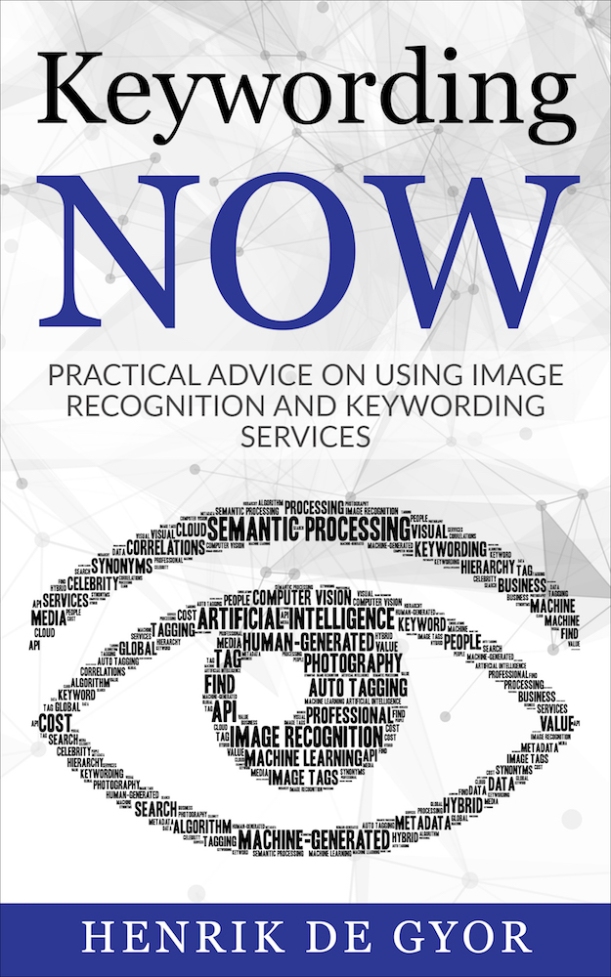Tagging.tech interview with Jonas Dahl
Manage episode 182306560 series 1489123
Tagging.tech presents an audio interview with Jonas Dahl about image recognition
Keywording Now: Practical Advice on using Image Recognition and Keywording Services
Now available
Transcript:
Henrik: Jonas, what are the biggest challenges and successes you’ve seen with image recognition?
Jonas: Yes. Well, deep learning is basically what happened, what defines before and after. So, basically in 2012, there’s a confluence of the data piece that is primarily enabled by the Internet, large amounts of well-labeled images that could drive these huge deep learning networks. There’s the deep learning technology and, obviously, the availability of raw computing power. So, that’s basically what happened. And with that we saw accuracy increase tremendously, and now it’s basically rivaling human performance, right? So we see both accuracy and also kind of the breadth of labeling you can do in classification you can do has just increased and improved tremendously in the last few years.
In terms of challenges, what I see is, I really see this as a path you’re going in or the first step is kind generic tagging of images, right? So what’s in an image? Are their people in it? What are the emotions? Stuff like that that’s pretty generic. And that’s kind of the era we’re in right now where we see a lot of success and where we can really automate these tedious tagging tasks at scale pretty convincingly.
I think the challenge right now is to move to kind of the next step, which is to personalize these tags. So, basically provide tags that are relevant not just to anyone but to your particular company. So, if you’re a car manufacturer and you want to be able to classify different car models. If you’re a retailer, you may want to be able to do fine grain classification of different products. So that’s the big challenge I see now and that’s definitely where we are headed and where we’re focusing on in all apps.
Henrik: And, as of November 2016, how do you see image recognition changing?
Jonas: Well, really where I see it changing is, as I said, it’s going to be more specific to the individual customer’s assets. It’s going to be able to learn from your guidance. So, basically, how it works now is that you have a large repository of already-tagged images, then you train networks to do classification. What’s going to happen is that we’re going to add a piece that makes this much more personalized, much more relevant to you, and where the system learns from your existing metadata and your guidance, basically, as you curate the proposed tags.
Another thing I see is video, it’s going to be more important. And video has that temporal component, which makes segmentation important, and that’s how that differs from images. So there’s that, and also the much larger scale that we’re looking at in terms of processing and storage when we’re talking about video. Basically, video is just a series of images, so when we develop technologies to handle images, those can be transferred to the video pieces, as well.
Henrik: Jonas, what advice would you like to share with people looking at image recognition?
Jonas: Well, I would say start using it. start doing small POCs [proof of concepts] to get a sense of how well it works for your use case and kind of define small challenges that, small successes you want to achieve and just get into it. This is something that is evolving really fast these days, so getting in and seeing how it performs now, then you’ll be able to provide valuable feedback to companies like Adobe. So you can basically impact the direction that this is going in. It’s something we value a lot. It’s really valuable to us that when we run beta programs, for instance, that people come to us and say, “You know, this is where this worked really well. These are the concrete examples where it didn’t work that well,” or, “These are specific use cases that we really wish that this technology could solve for us.”
So now is a really good time to get in there and see how well it works. And also, I’d say, just stay on top of it. Stay in touch because, as I said, this evolves so fast that you may try it today and then a year from now things can look completely different, and things can have improved tremendously.
So that’s my advice. Now is a good time. I think the technologies have matured enough that you can get real solid value out of them. So this is a good time to see what can these technologies do for you.
Henrik: Jonas, where can we find more information?
Jonas: Yeah, so we just at Adobe launched what we call Adobe Sensei, which is the collection of all the AI and machine learning efforts we have at Adobe. And going, just Googling that, and going to that website, that will be updated with all the exciting things that we are doing in that space. And I would recommend that you keep an eye on that because that’s something that’s going to really evolve the next few years.
Henrik: Great. Well, thanks, Jonas.
Jonas: Yeah, you’re welcome.
Henrik: For more on this, visit Tagging.tech.
Thanks again.
For a book about this, visit keywordingnow.com
19 episod





